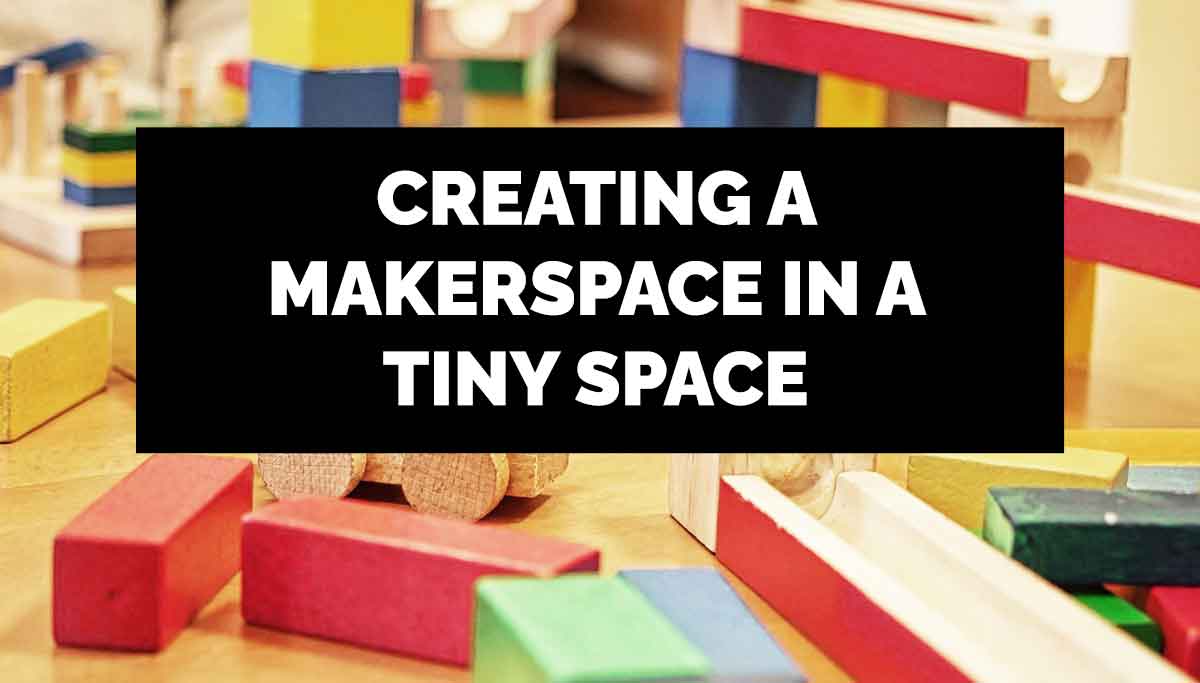One of the challenges for many schools, universities, and libraries that wish to offer a makerspace is to find adequate space to dedicate to the project. Today I thought I’d share some ideas + resources for ways you can have a makerspace without having a lot of available space or if you have to share a space with another department.
Make it Mobile
Many makerspaces can be mobile – all you need is a large cart on wheels to easily move your makerspace from one area of your campus to another. Our local library does this as they have two large conference room areas for classes and workshops, but they can’t dedicate these spaces specifically as a makerspace.
Your cart can hold a variety of different makerspace supplies and as long as you have adequate storage space you can often change things up for different themes and projects your community is working on.
Mobile carts are also excellent for schools – a makerspace department could easily move from an art room to the science lab to even classrooms for various projects and activities.
Another advantage to a mobile makerspace is you can even take your activities outdoors. While indoor space may be at a premium, oftentimes many schools and college campuses have large, open outdoor spaces that go unused.
Find a Focus
There are tons of different departments and mediums you can offer in your makerspace, but if you are limited on space it’s usually best to just focus on a few of these things. Many makerspaces in my local area focus on one particular thing, whether it’s woodworking or circuitry.
When finding your focus, think about the community you are serving. What are their needs? What types of things do they most enjoy making? What projects would otherwise be inaccessible for them if the makerspace did not exist.
Be Choosy About Materials Donations
While it’s often easy to get donations for materials, there will come a time if you are limited on space where you will need to be a bit more selective on the types of materials you can accept as donations. It’s important that you have items that are easily stored and organized – you may not want large bulky items that take up a lot of space.
Loan Items Out
Many libraries have had a lot of success in recent years with loaning out different things that may seem unconventional – my local library loans out metal detectors!
You could easily set up weekly loans for smaller portable items such as legos, building blocks, k’nex kits, polymer clay tools like pasta machines and sculting tools, power tools, soldering kits, sewing machines, weaving looms, spinning wheels and more. This again allows your community to explore different mediums and projects.
Host Virtual Classes and Events
Another way to make the most of a tiny makerspace is to host virtual events. As the world changed drastically since 2020, virtual events have become more commonplace as a necessity.
You could host these classes over sites such as YouTube Live and Facebook, or utilize Google Meets or Zoom. With these types of virtual meetups you still have the benefit of collaborating with community but do not necessarily have to provide the space.
If you have a tiny makerspace, don’t worry about it. Sometimes having a smaller space will actually push you to do more creative things than you ever thought were possible!
Do you have any tips for running a small makerspace? Share your thoughts + experiences in the comments section below!
